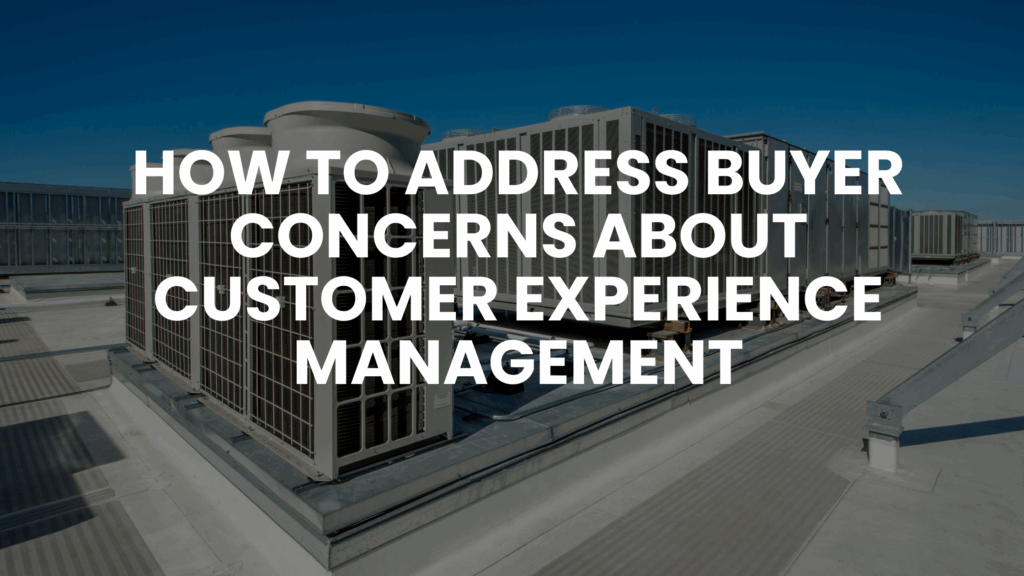When you’re preparing to sell your HVAC business, one of the key factors that will impact the sale price and terms is customer experience management (CEM). Buyers are increasingly looking at how well your business manages customer interactions, as this directly impacts customer satisfaction, loyalty, and future revenue. However, potential buyers may have concerns about the existing CEM practices, especially if they are unfamiliar with your business operations. Addressing these concerns proactively can help position your HVAC business as a valuable investment opportunity.
Understand Buyer Concerns
Buyers often have several concerns when it comes to customer experience management. These may include worries about the effectiveness of current customer service strategies, the ability to maintain customer satisfaction after the transition, or the cost of upgrading systems to meet modern expectations. As a seller, it’s essential to understand these concerns and be prepared to address them effectively.

1. Showcase Proven CEM Strategies
One of the best ways to alleviate buyer concerns is by demonstrating that you have a solid, proven customer experience management system in place. If your HVAC business already has a structured approach to CEM—whether it’s a formal CRM system, customer feedback loops, or personalized service strategies—highlight these during the sales process. Share specific examples of how these practices have led to improved customer satisfaction, higher retention rates, and increased referrals. Having concrete data to back up the effectiveness of your customer experience initiatives will go a long way in reassuring potential buyers.
2. Provide Documentation and Training Plans
Buyers want to know that they can step into your HVAC business and maintain, or even improve, customer satisfaction without a steep learning curve. To ease their concerns, offer comprehensive documentation on your CEM practices, including any training materials for employees and detailed operational guidelines. This shows buyers that customer experience management is a priority within your business and that they will have the tools and resources needed to continue providing excellent service. If your business has a strong track record in customer service, this documentation will serve as a valuable asset for the new owner.
3. Explain How Customer Experience Management Will Continue After the Sale
Another common concern buyers have is whether your customer experience management system will continue to thrive after the sale. Reassure them by explaining how your team, processes, and systems are designed to be sustainable in the long term. If possible, offer to stay on for a transition period to help the new owner integrate seamlessly into the business. This hands-on approach can make a significant difference in easing buyer anxiety, showing that they will be supported during the transition and that the CEM practices they’re inheriting are built to last.
4. Highlight the ROI of Effective CEM
Buyers are ultimately looking for a return on investment (ROI), and they understand that a strong customer experience is key to achieving this. Provide clear examples of how your CEM strategies have positively impacted your bottom line. For instance, show how customer satisfaction has led to repeat business, customer referrals, and higher revenue. If you’ve tracked key performance indicators (KPIs) related to CEM, such as customer retention rates or Net Promoter Scores (NPS), use this data to demonstrate the ROI of your customer experience initiatives. Buyers will be more confident in their decision if they see that your business’s customer experience practices have a proven, quantifiable impact on profitability.
5. Offer Insights on Future CEM Opportunities
If there are opportunities for enhancing customer experience management, highlight these to the buyer. Whether it’s upgrading technology, expanding your feedback systems, or enhancing training programs, offering insights into future CEM improvements can help potential buyers feel more confident about taking over the business. By presenting a roadmap for future growth, you show that your business has the potential for continued success, making it a more attractive investment.
Conclusion
Addressing buyer concerns about customer experience management is crucial for maximizing the value of your HVAC business. By showcasing proven CEM strategies, providing detailed documentation and training, ensuring continuity post-sale, and highlighting the ROI of your practices, you can ease any potential concerns and position your business for a successful sale.
If you need additional support in preparing your business to sell or would like to sell now, text or call Scale or Exit Partners at (832)745-2721. You can also email us at garyd@scaleorexit.com. To learn more about Scale or Exit Partners, visit www.scaleorexit.com. We have access to investors if you want to sell now, and if you want to get the best price and terms for a future sale, we can help you get ready.
